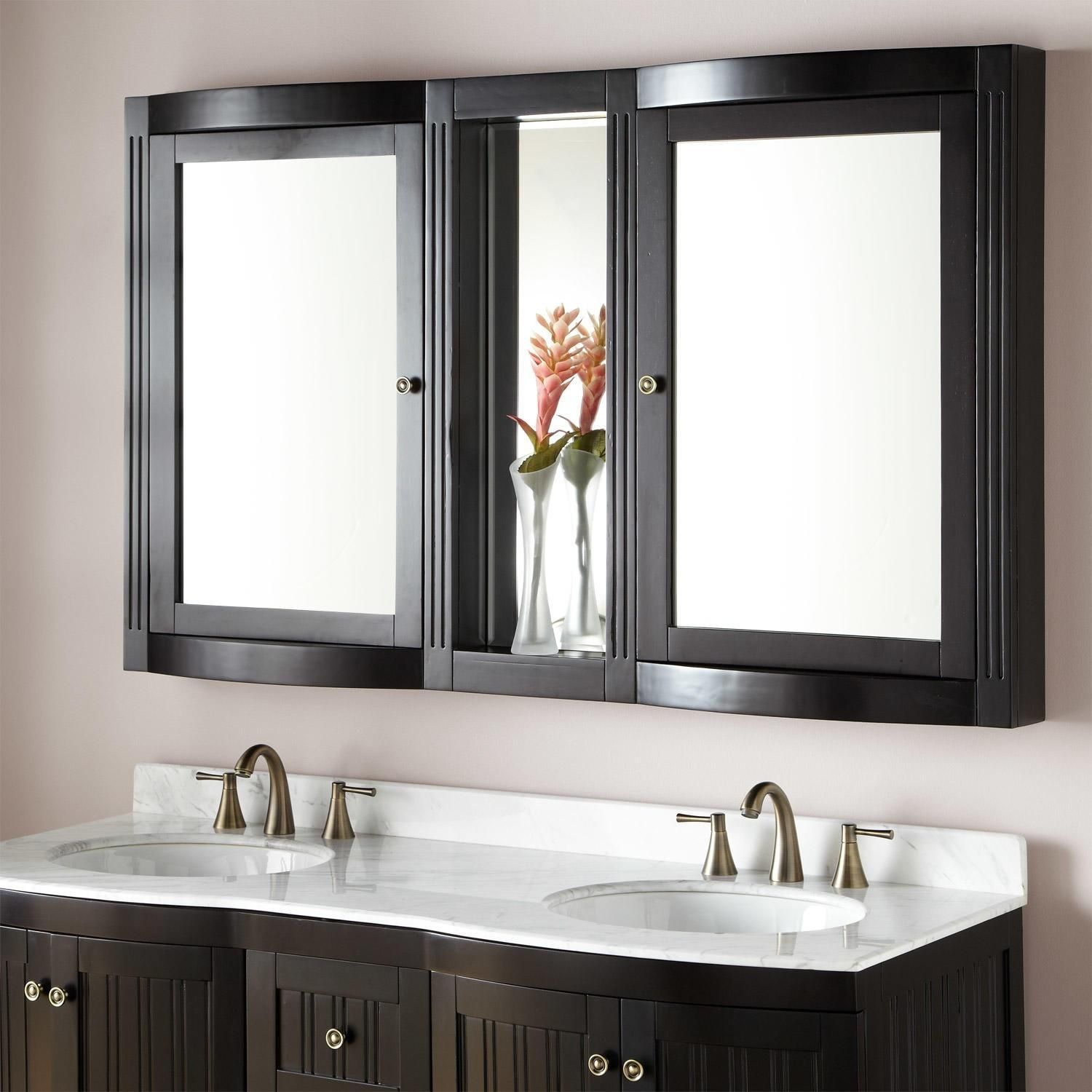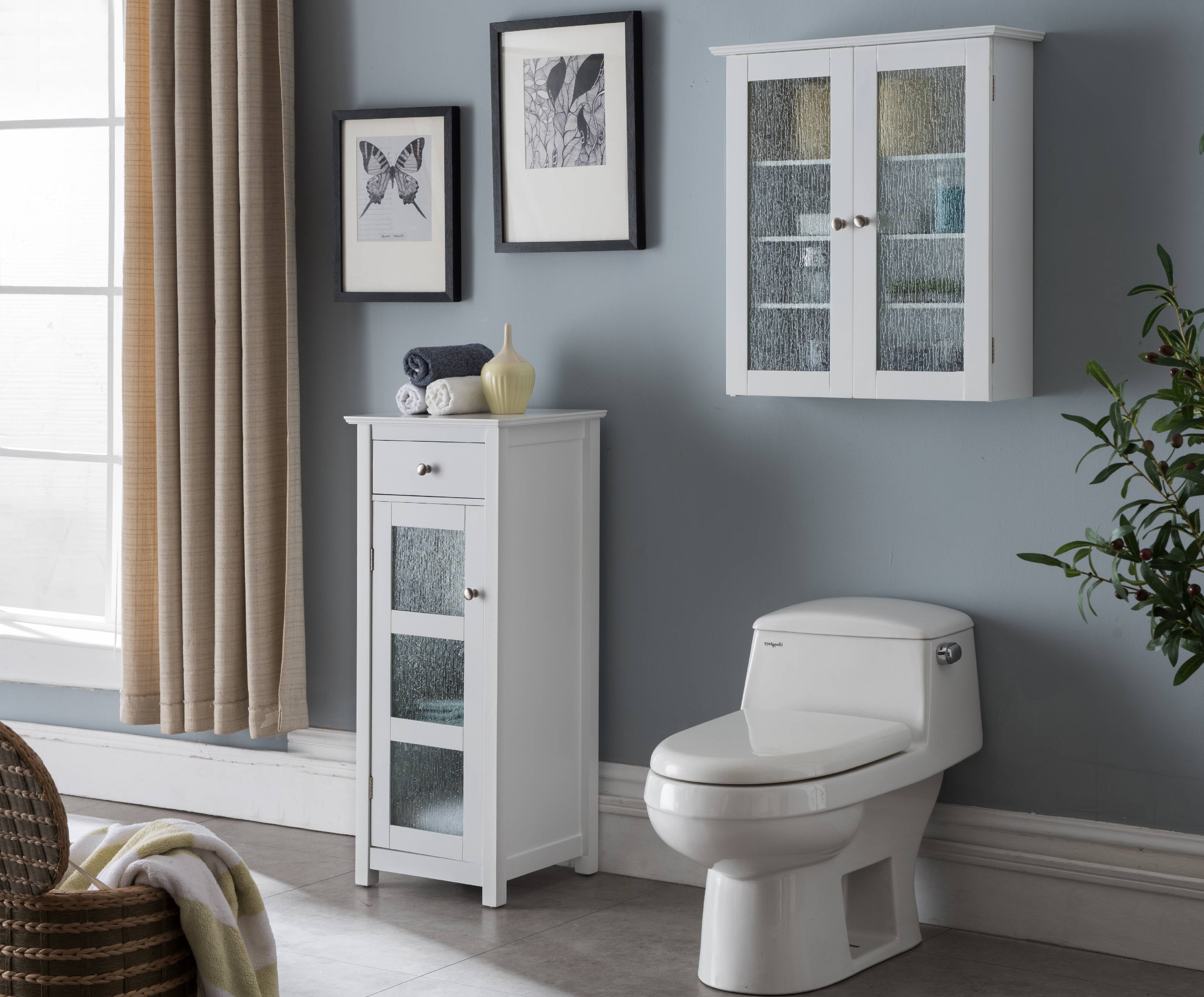Design Trends in Contemporary Bathroom Medicine Cabinets

The contemporary bathroom medicine cabinet transcends mere storage; it’s a statement piece reflecting personal style and enhancing overall bathroom design. Current trends emphasize clean lines, versatile functionality, and a seamless integration with the surrounding aesthetic, moving beyond purely utilitarian designs. The selection of materials and finishes plays a crucial role in achieving this harmonious blend of form and function.
Prevalent Design Styles and Materials
Contemporary medicine cabinet styles reflect a broad spectrum of tastes, from minimalist sleekness to the rustic charm of modern farmhouse designs. Minimalist cabinets, often characterized by their simple, geometric forms and lack of ornamentation, frequently utilize sleek materials like lacquered wood (often white or light gray) or brushed aluminum. Modern farmhouse styles, in contrast, incorporate natural wood, such as oak or walnut, with possibly a distressed finish to achieve a sense of aged warmth, sometimes complemented by black metal accents. A “traditional with a twist” approach might feature a classic framed mirror cabinet but with updated hardware, perhaps in brushed nickel or oil-rubbed bronze, and a more contemporary color palette. Glass is another prevalent material, often used in conjunction with wood or metal frames, allowing for a lighter, airier feel. Finishes range from matte to high-gloss, depending on the overall bathroom design.
Functionality of Recessed, Surface-Mounted, and Mirrored Cabinets
The choice between recessed, surface-mounted, and mirrored medicine cabinets significantly impacts both aesthetics and practicality. Recessed cabinets offer a clean, integrated look, disappearing seamlessly into the wall, maximizing space efficiency, especially in smaller bathrooms. However, installation requires significant remodeling and is not always feasible. Surface-mounted cabinets provide a more straightforward installation process, offering flexibility in placement. They can be easily moved or replaced if needed, but they project outward, potentially reducing available space. Mirrored cabinets combine storage with a functional mirror, maximizing utility, and enhancing the sense of spaciousness in a smaller bathroom. However, they may not always offer as much storage space as a dedicated cabinet.
Comparison of Contemporary Medicine Cabinet Styles
The following table compares four distinct contemporary medicine cabinet styles, highlighting their key features, typical price ranges, and suitability for different bathroom aesthetics. Price ranges are estimates and can vary significantly based on size, materials, and brand.
| Style | Key Features | Typical Price Range | Suitable Bathroom Aesthetics |
|---|---|---|---|
| Minimalist | Sleek design, simple lines, lacquered wood or metal, often with integrated lighting | $200 – $800 | Modern, contemporary, minimalist |
| Modern Farmhouse | Natural wood (oak, walnut), possibly distressed finish, black or brushed nickel hardware | $300 – $1200 | Modern farmhouse, rustic, transitional |
| Traditional with a Twist | Classic framed mirror, updated hardware (brushed nickel, oil-rubbed bronze), contemporary color palette | $400 – $1500 | Transitional, eclectic, slightly traditional |
| Industrial Chic | Metal frame (steel, iron), exposed hardware, potentially reclaimed wood accents | $350 – $1000 | Industrial, loft, modern |
Smart Features and Technological Integration: Contemporary Bathroom Medicine Cabinets

The contemporary bathroom, once a purely functional space, is undergoing a significant transformation, evolving into a sanctuary of personal wellness and technological sophistication. This evolution is profoundly shaped by the integration of smart features into everyday bathroom fixtures, including the humble medicine cabinet. No longer merely a storage solution, the modern medicine cabinet serves as a nexus of convenience and connectivity, seamlessly blending form and function.
The incorporation of smart features elevates the medicine cabinet beyond its traditional role. Built-in lighting, USB charging ports, and Bluetooth speakers are no longer futuristic luxuries but increasingly common features, enhancing both the aesthetic appeal and practical utility of these essential bathroom components. These advancements reflect a broader trend towards integrating technology into our living spaces to improve efficiency and enhance the overall user experience.
Smart Features in Contemporary Medicine Cabinets
The integration of smart features significantly impacts the functionality and user experience of contemporary medicine cabinets. Built-in LED lighting, for instance, provides superior illumination compared to traditional incandescent bulbs, offering adjustable brightness levels to suit individual preferences and needs. This eliminates the need for separate lighting fixtures, contributing to a cleaner, more streamlined bathroom design. USB charging ports offer a convenient solution for charging personal electronic devices, eliminating the clutter of charging cables and ensuring that smartphones and other devices are always readily available. Bluetooth speakers provide a sophisticated touch, allowing users to enjoy their favorite music while preparing for the day or relaxing after a long one. The benefits extend beyond mere convenience; the enhanced lighting improves visibility for applying makeup or shaving, while the charging ports and Bluetooth speakers transform the bathroom into a more personalized and enjoyable space.
Example of a Fictional Smart Medicine Cabinet: The “Aura” Cabinet, Contemporary bathroom medicine cabinets
Imagine a sleek, minimalist medicine cabinet, the “Aura,” crafted from polished brushed nickel with mirrored doors. The Aura boasts three key smart features:
- Integrated Ambient Lighting: The cabinet incorporates a system of adjustable LED strip lighting around its perimeter. The lighting color temperature and brightness can be controlled via a touch-sensitive control panel on the cabinet’s exterior or through a dedicated smartphone app. This allows users to customize the lighting to match their mood or the time of day, creating a calming atmosphere in the morning or a vibrant space in the evening.
- Wireless Charging Pad: A Qi-compatible wireless charging pad is discreetly integrated into the cabinet’s interior shelf. This eliminates the need for charging cables and provides a convenient way to charge compatible smartphones and other devices while they are stored securely within the cabinet.
- Voice-Activated Smart Mirror: The mirror on the cabinet door is not just reflective; it’s a smart mirror with voice-activated capabilities. Through a built-in microphone and speaker, users can access weather forecasts, play music, set reminders, or control other smart home devices with simple voice commands. This feature transforms the cabinet into a central hub for smart home technology within the bathroom.
Impact of Smart Technology on User Experience
The integration of smart features dramatically enhances the user experience in the bathroom. The convenience of wireless charging, the ability to personalize lighting, and the integration of voice-activated controls contribute to a more seamless and enjoyable daily routine. For instance, waking up to soft, warm ambient lighting from the Aura cabinet can create a more pleasant start to the day, while listening to music through the built-in Bluetooth speaker can make the morning routine more relaxing. Similarly, having a smartphone wirelessly charge while securely stored within the cabinet eliminates the need to search for a charging outlet or deal with tangled cables. The smart mirror further enhances convenience by providing quick access to information and control over smart home devices without having to reach for a separate device. This illustrates how smart technology is transforming the bathroom from a purely functional space into a personalized and technologically integrated environment.
